If you’ve decided to use cloth diapers on your baby, you need to learn how to prep them. This guide will teach you how to wash cloth diapers for the first time.
The cloth diapers I use for my kids are absolutely wonderful. (Disposable) regular diapers work well, but as a crunchy mom, I prefer cloth diapers. The truth is that the wash routine isn’t as difficult as most people think.
That being said, cloth diapers are susceptible to leaking due to ammonia and detergent buildup if they aren’t properly cared for.
A novice cloth diaperer might wonder if they need to be washed before using their first stash of diapers. Before using them, wash them at least a couple of times, whether you bought them new or secondhand.
Ammonia, detergent, and other yucky stuff can stick to the fibers of cloth diapers when they aren’t washed properly. But don’t fret, mama, I will show you how to clean cloth diapers the right way!!
Keep reading to learn about prepping cloth diapers, whether new or used and how to clean cloth diapers properly.
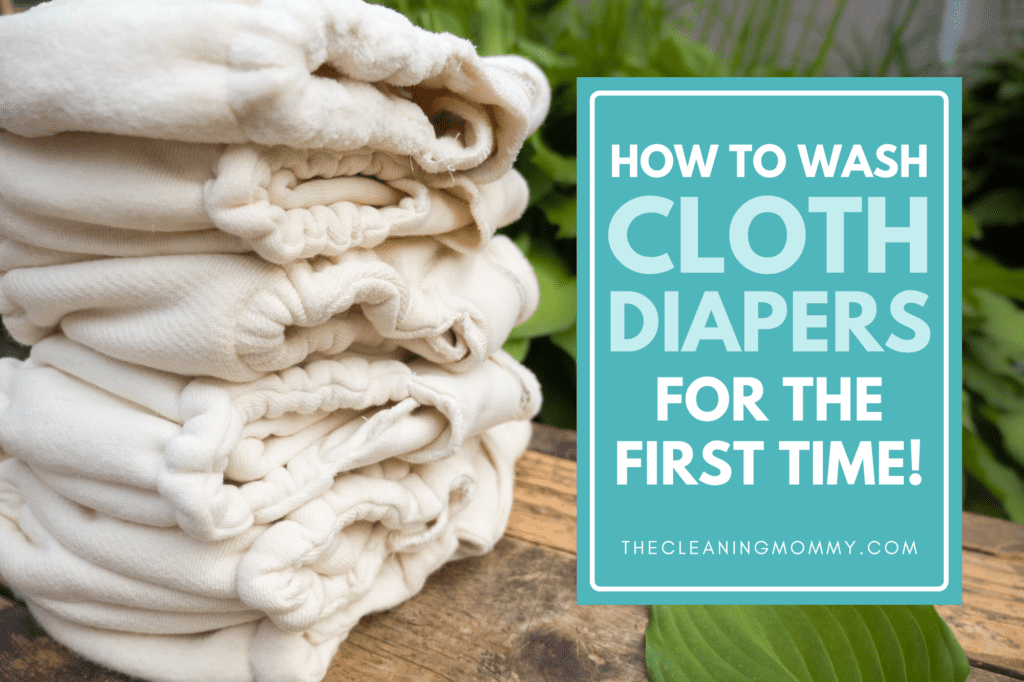
Why Do We Prep Cloth Diapers
In cloth diapering, preparation, sometimes known as “prep,” is the process of cleaning used or new diapers before using them with your baby. You should prep cloth diapers for two reasons:
- Ensure that your baby’s diapers are clean before placing them on him or her. To prevent diaper rash, we recommend you always wash cloth diapers before you use them since they are worn against your baby’s most sensitive parts. No matter whether they are made by a work-at-home-mom or a diaper company, cloth diapers are manufactured outside your home. Unfortunately, you don’t know what kind of chemicals or contaminants have been exposed to the diapers. Pre-washing will eliminate any worries.
- In order to maintain the integrity of natural fibers, natural plant oils need to be removed. Textiles made from organic cotton, hemp, and charcoal bamboo contain natural oils found in the fabric. Before using diapers, it’s crucial to remove natural oils from cloth because they limit absorption. Since plant crops change from season to season, you may need to wash diapers from different batches more or fewer times. Textiles made from natural fibers reach their maximum absorbency after 10 washing cycles. In general, they can be worn during the day after a few washes (but aren’t ideal for night-time wear)
Pocket diapers, prefolds, cloth diaper covers, and pre-loved diapers all need to go through a proper prepping process before use. The same for synthetic fiber diapers and all the other diapers on your cloth journey!
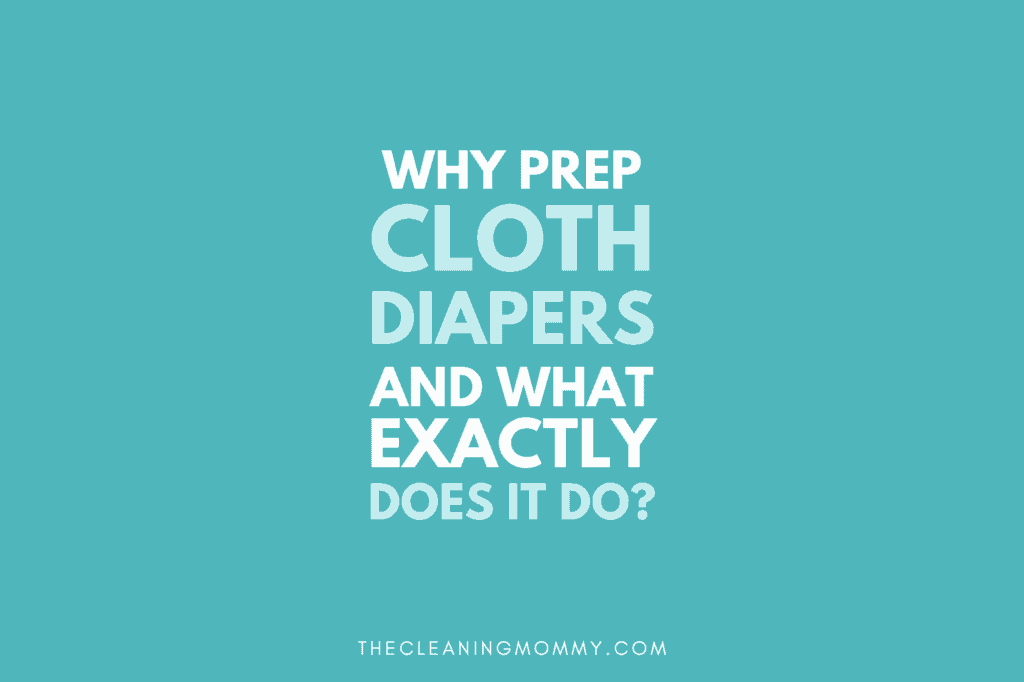
Washing Your New Cloth Diaper
The first step to prepping diapers is to check the label on your products to determine what kind of fabric you have. Are they synthetic diapers? Natural fabrics? Diaper covers? Or just a stash of cotton pre-loved diapers? You should prepare cloth diapers according to the material (or, synthetic materials) they are made of.
Polyester is used for both stay-dry linings and micro terry. Polyester diapers or polyester-nylon diapers require only one wash before they can be used. For extra safety and health, we recommend washing polyester diapers and diapers with synthetic fibers before use, regardless of whether they need to be prepped.
Ready to prep pre loved diapers for the first time? Grab those new cotton diapers and head to the washing machine for the first wash cycles!
- Put the new diapers in the laundry with the recommended amount of cloth diaper safe detergent (or natural detergents) for the first wash cycle.
- Run a hot water cycle (110-140° F).
- After the initial rinse, do an extra rinse to make sure all the detergent is gone.
- Dry clean diapers with low heat, or hang dry.
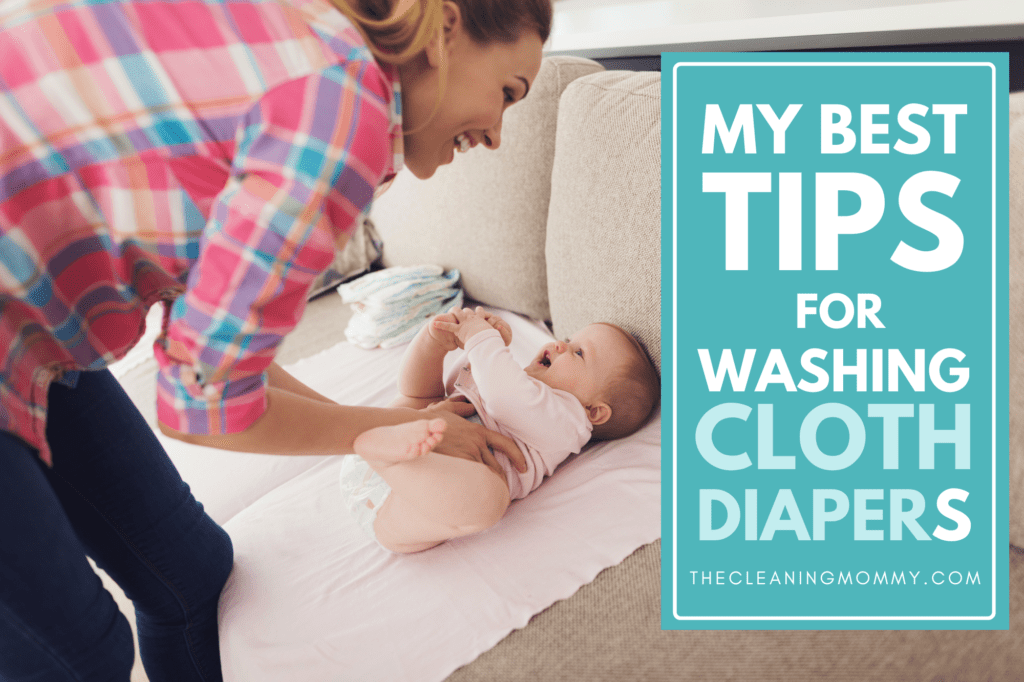
Prepping Natural Fiber Diapers
Fabrics such as cotton, hemp, and bamboo become absorbent after numerous washings. Other diapers with darker fabrics generally require more washings in order to be completely prepared. Whiter fibers have been stripped of some of their natural oils during the production process. The shrinkage of natural fiber diapers is normal and should be anticipated when preparing them. In comparison to cotton and hemp diapers, bamboo diapers can shrink by up to 20%.
- Put the new cloth diapers in the laundry with the recommended amount of laundry detergent.
- Run a hot cycle (110-140° F).
- Do a final rinse a second time to make sure all of the detergents are gone.
- Dry on low heat. The cloth quilter is made softer by using the dryer until the diapers reach full absorbency.
- Repeat the wash and dry cycle at least 3-5 times before cloth diapering your baby.
- After 10 washes, peak absorbency will be reached in the cloth diaper. Wait until a cloth diaper is completely absorbent before wearing it for naps or at night.
- Bleach and fabric softener should not be used.
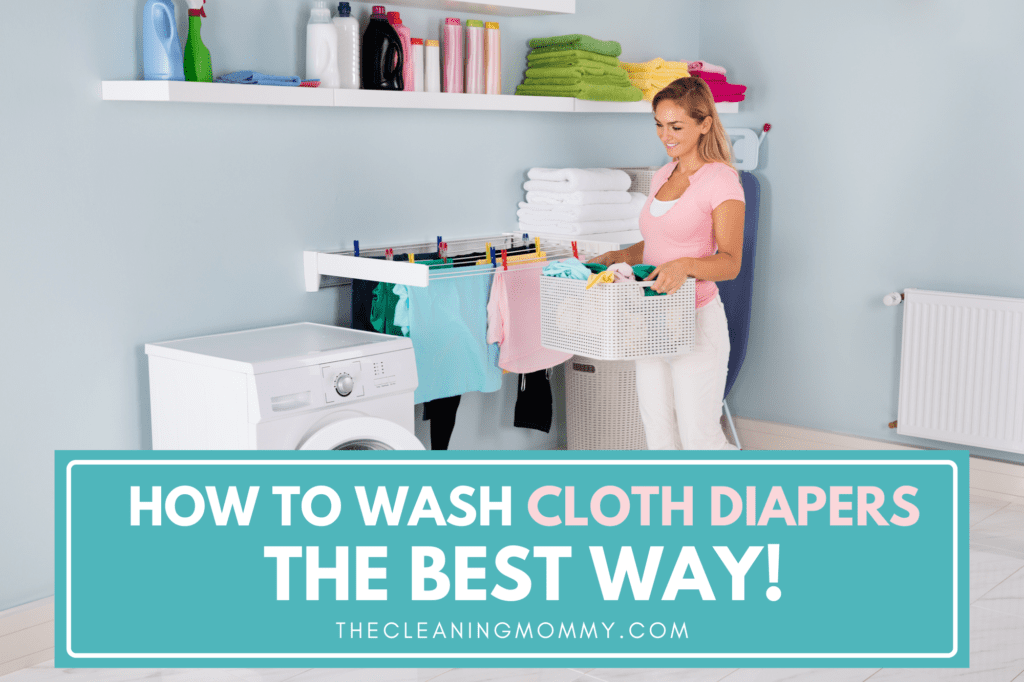
Tips For Washing Cloth Diapers
Put It Off Until Washing Day
Unless you want to do laundry daily, you only need to wash a cloth diaper load every 2-3 days at the most. Otherwise, you’ll likely run out of a fresh cloth diaper to use from your stats, and naturally, have a lot of stink and bacteria to deal with.
Any container that can be sealed (to keep the smell in) will suffice for soiled diapers. Many people use a “dry pail”, which is just a lidded pail with a disposable liner.
Using a diaper sprayer will help you remove solid waste from poopy diapers before storing them until laundry day. These can be hooked to your toilet, and waste can be sprayed directly into the toilet bowl, and flushed away properly.
Add Everything To the Washer
Add your diapers, wet bag, and diaper pail contents. The same applies if you use cloth wipes. You should wash your cloth diapers separately from your regular laundry.
First, Do A Rinse
Before starting the wash cycle, we rinse with cold water and no laundry detergent. Rinsing and spinning take 11 minutes.
A cold rinse helps remove stains before the main wash. Stains may set in and discolor if you skip this stage.
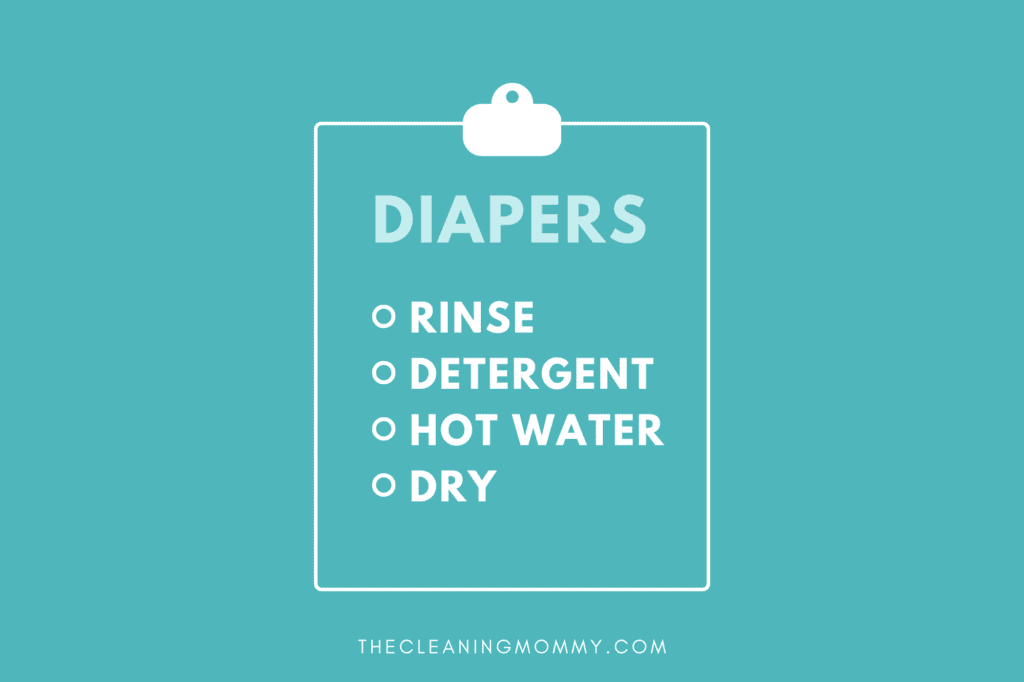
Add Your Preferred Detergent
With no harsh chemicals and suitable for cloth diapers as well as high-efficiency machines, Nellie’s All-Natural Laundry Soda is a safe detergent.
Of course, you should start with the recommended amount on the container of whatever brand of detergent you wish to use.
To avoid detergent residue and buildup on the diapers, skip the fabric softeners, dryer sheets, and any other laundry additives. When drying cloth diapers, I use wool dryer balls.
Use Hot Water
During the main hot wash, we wash our diapers in hot water to kill bacteria.
Temperatures over 130 degrees Fahrenheit may ruin elastic or PUL (the waterproof cover on some cloth diapers).
Usually, I rinse them one last time. After washing, be sure to smell them! If they smell foul, repeat the rinse.
Run another wash cycle if the diapers continue to stink. A HE machine’s fill level is detected by sensors, and extra weight should ensure adequate water consumption.

Dry Well
Depending on your preference, line or tumble dry them.
The dryer works for us. It usually takes 15-30 minutes to dry anything with elastic or PUL. Pre-folds are dried on normal heat.
To whiten and disinfect a cloth diaper, dry it in the sun.
Washing Cloth Diapers With Hard Water
Is your water hard? You’ll probably need extra detergent. Hard water may require a bit more laundry soap, even if you have a water-softening system.
Cleaning them thoroughly is important even with soft water. Inconvenient bottoms can result from diaper residue.
Unscented hard water treatments are available. Let the softener dissolve in the water before adding the detergent. But don’t use this in the rinse cycle.

How Often Should I Be Cleaning Cloth Diapers?
It’s best to wash frequently (2-3 days). More stinky diapers result from waiting longer. Stains will appear as bacteria multiply.
How to Deal With Stains
Discoloration is inevitable with cloth diapers. Baking soda and washing soda are great laundry boosters for stains.
When your child starts eating solids, invest in a diaper sprayer to rinse them off before putting them in the bag.
Direct sunlight can also power them when they get dingy.
Vinegar & Bleach
Certain diaper manufacturers encourage the use of bleach occasionally, but it may violate their guarantee. White vinegar shouldn’t invalidate the warranty.
You can use a bleach soak on cotton prefolds, however, which works great.
Vinegar is also potent, so be careful! Make sure you use the smallest quantity possible and rinse well afterward.
Washing Cloth Diapers Bottom Line
Cloth diapers are a great option for the environment, your wallet, and your kid. For many new parents, though, they are a fresh notion. It’s critical to understand the ins and outs of these items, which includes how to clean them.
More On Cleaning Baby Stuff
- How to Wash Clothes With Poop On Them
- How To Clean High Chair Straps
- How To Clean Bath Toys
- How To Clean Pack N Play Mattress (3 Ways)
- How To Wash A Onesie

Grainne Foley
Grainne Foley is a wife and mother of 2 great kids. During her 5 years of full time RV travel, Grainne learned to become very efficient at household chores, in order to make time for family adventures. Now, back in a house, she has continued to create tools and techniques to help others lighten the load of household organization and cleaning.

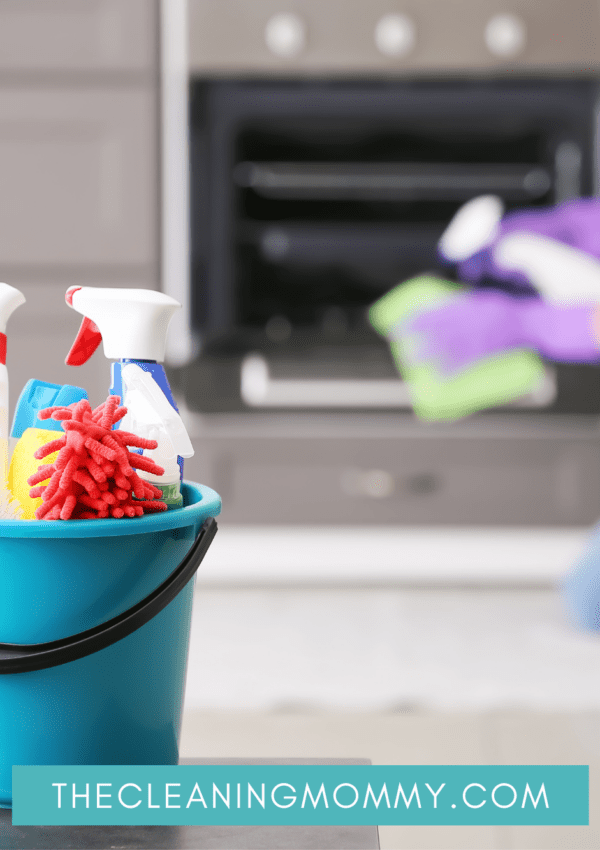
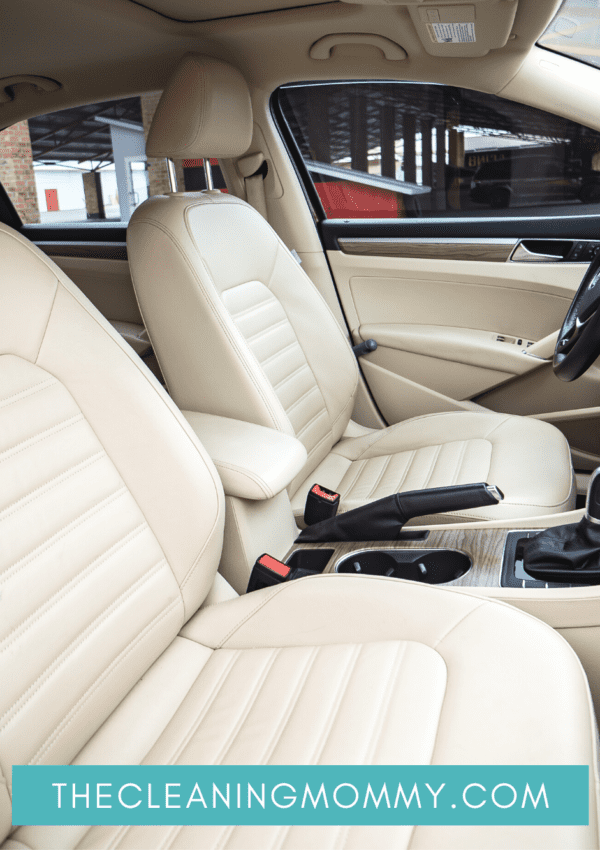
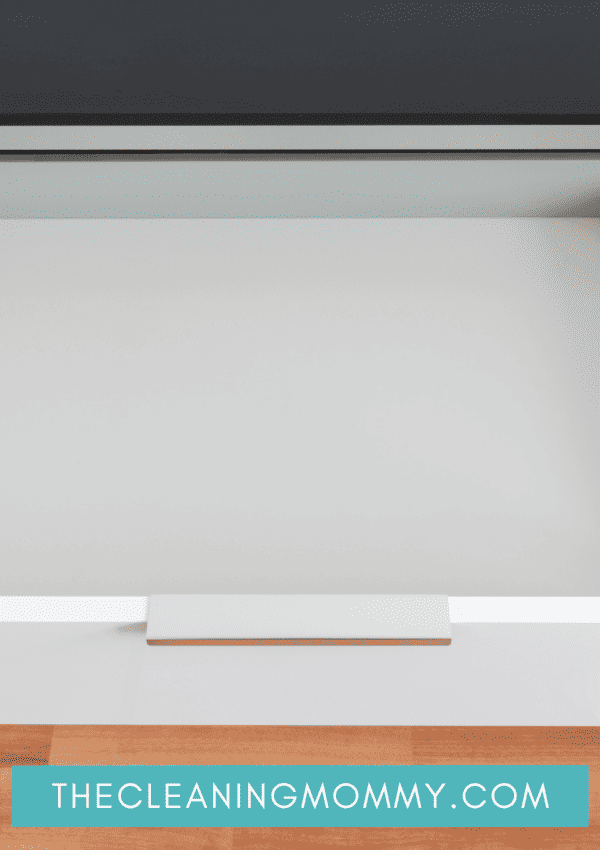
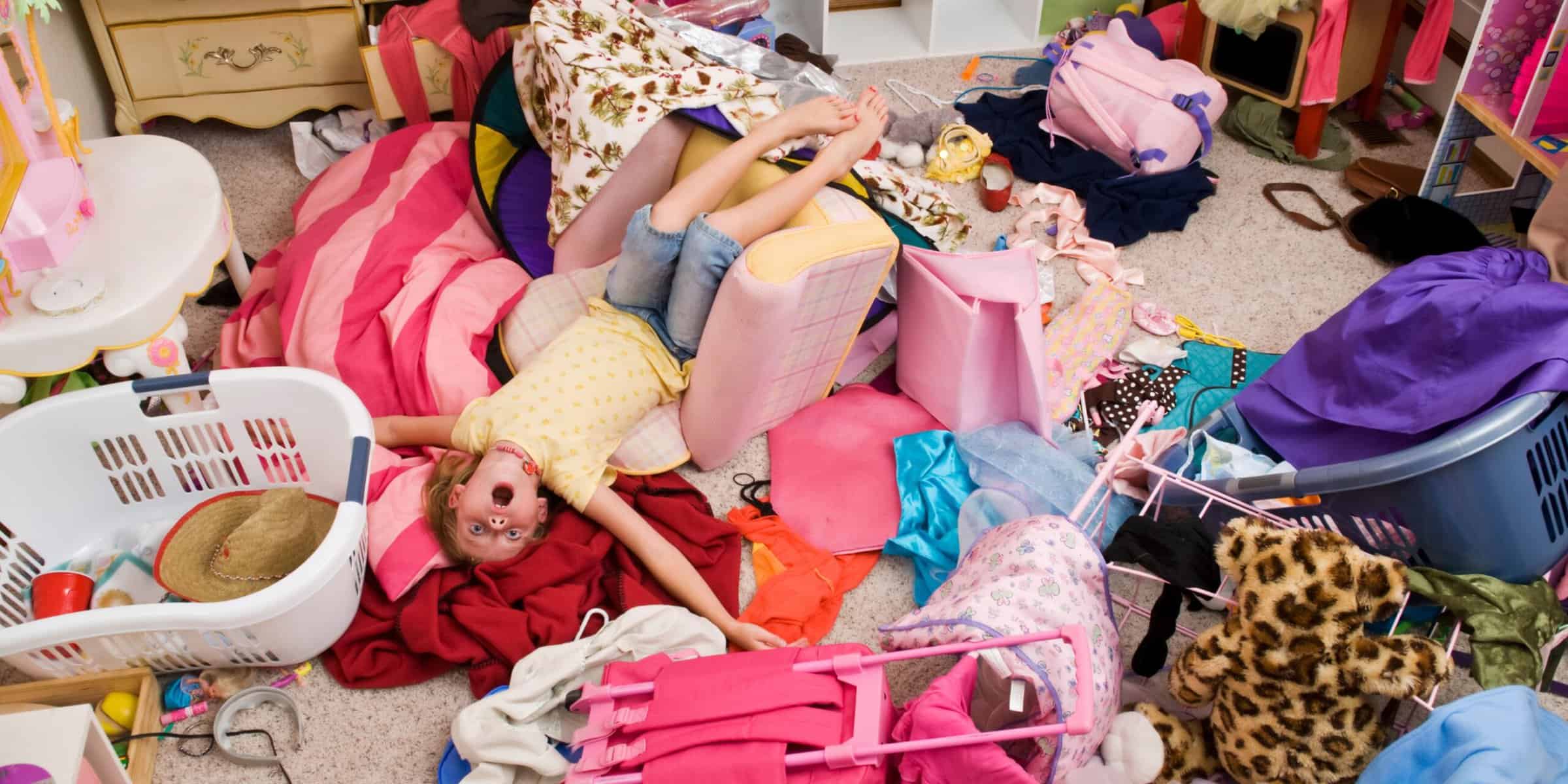
Leave a Reply